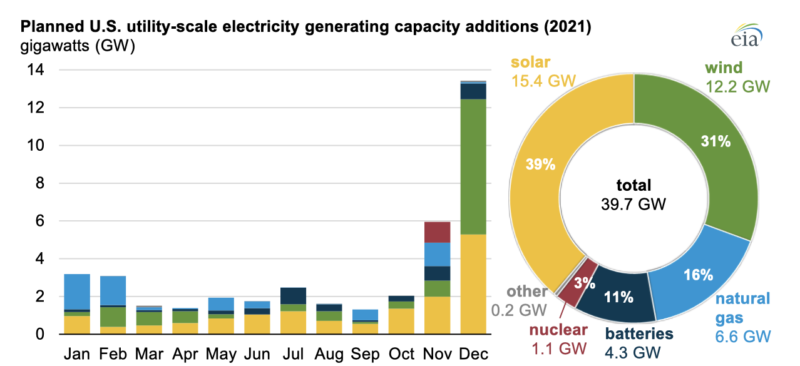US grid will see 80 percent of its new capacity go emission-free

Earlier this week, the US Energy Information Agency (EIA) released figures on the new generating capacity that's expected to start operating over the course of 2021. While plans can obviously change, the hope is that, with its new additions, the grid will look radically different than it did just five years ago. The report includes the details of where a new nuclear plant may be started up, although it will be dwarfed by the capacity of new batteries. But the big picture is that, even ignoring the batteries, about 80 percent of the planned capacity additions will be emission-free.
New nukes?The EIA's accounting shows that just under 40 Gigawatts of capacity will be placed on the grid during 2021, but there are a number of caveats to this. First and foremost is the inclusion of batteries, which account for over 10 percent of that figure (4.3GW). While batteries may look like short-term generating capacity from the perspective of "can this put power on the grid?" they're obviously not actually a net source of power. Typically, they're used to smooth over short-term fluctuations in supply or demand rather than a steady source of power.
Still, given the rarity of grid-scale batteries even a few years ago, 4.3GW of them is striking.
Read 9 remaining paragraphs | Comments